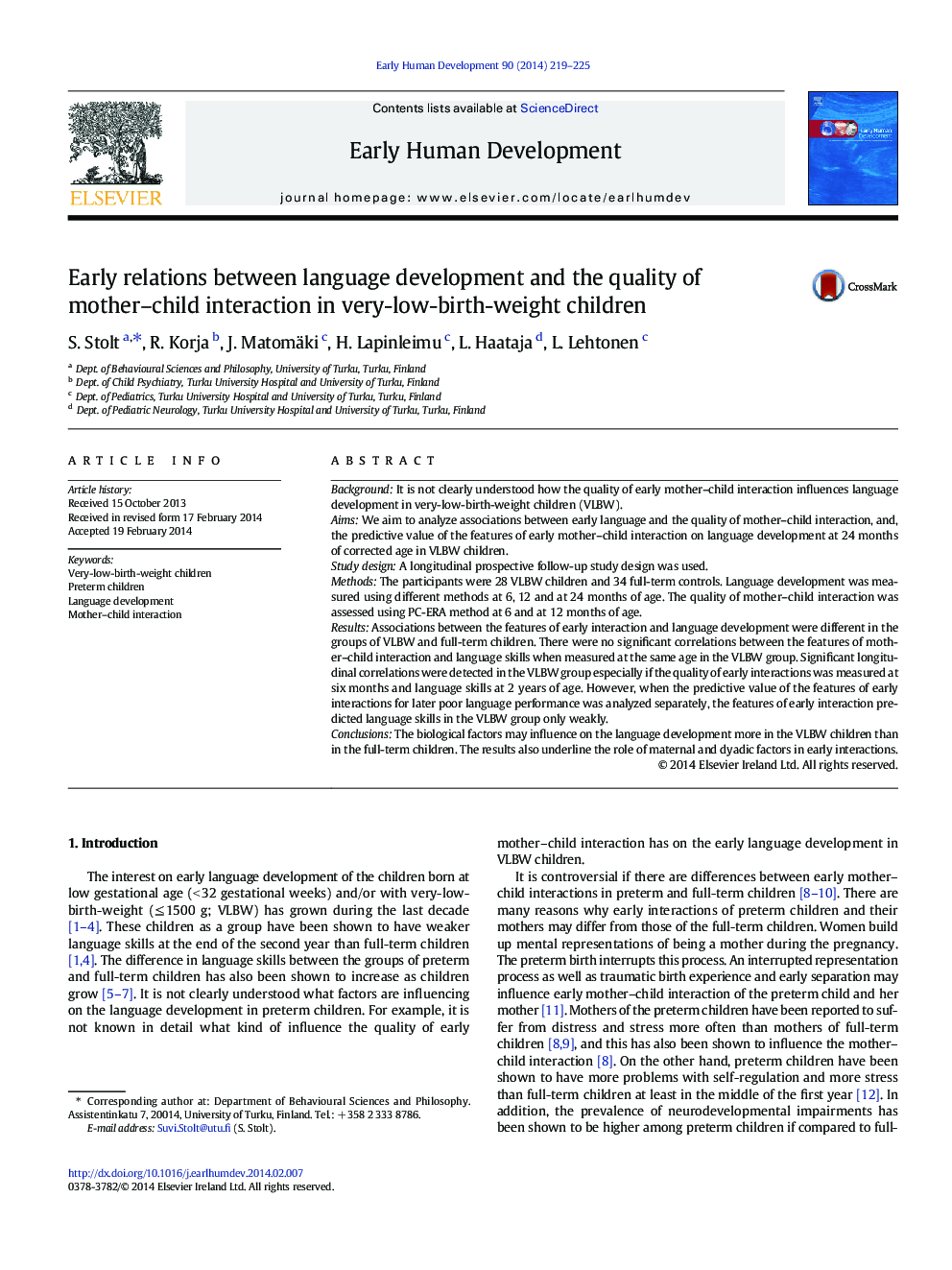| Article ID | Journal | Published Year | Pages | File Type |
|---|---|---|---|---|
| 6172237 | Early Human Development | 2014 | 7 Pages |
BackgroundIt is not clearly understood how the quality of early mother-child interaction influences language development in very-low-birth-weight children (VLBW).AimsWe aim to analyze associations between early language and the quality of mother-child interaction, and, the predictive value of the features of early mother-child interaction on language development at 24Â months of corrected age in VLBW children.Study designA longitudinal prospective follow-up study design was used.MethodsThe participants were 28 VLBW children and 34 full-term controls. Language development was measured using different methods at 6, 12 and at 24Â months of age. The quality of mother-child interaction was assessed using PC-ERA method at 6 and at 12Â months of age.ResultsAssociations between the features of early interaction and language development were different in the groups of VLBW and full-term children. There were no significant correlations between the features of mother-child interaction and language skills when measured at the same age in the VLBW group. Significant longitudinal correlations were detected in the VLBW group especially if the quality of early interactions was measured at six months and language skills at 2Â years of age. However, when the predictive value of the features of early interactions for later poor language performance was analyzed separately, the features of early interaction predicted language skills in the VLBW group only weakly.ConclusionsThe biological factors may influence on the language development more in the VLBW children than in the full-term children. The results also underline the role of maternal and dyadic factors in early interactions.
